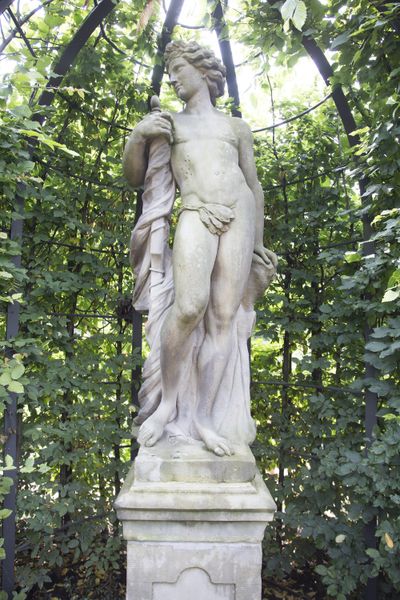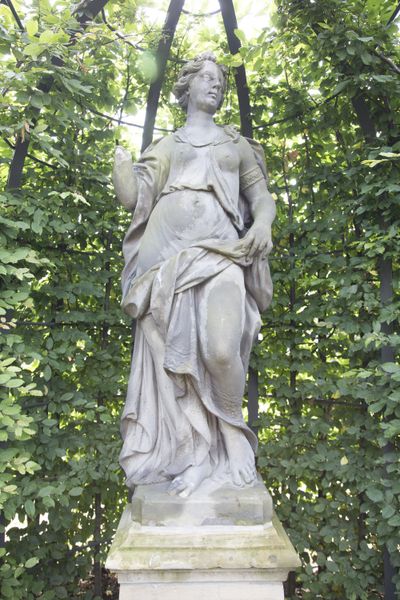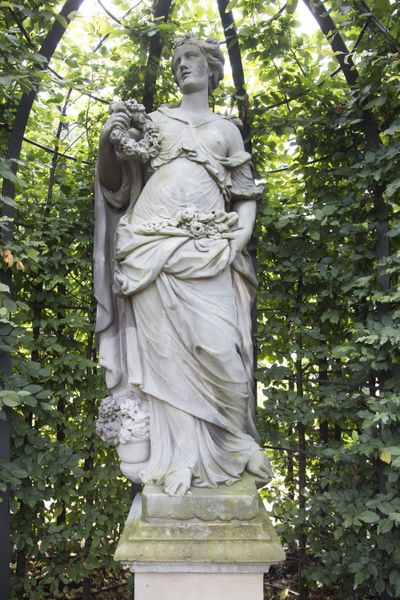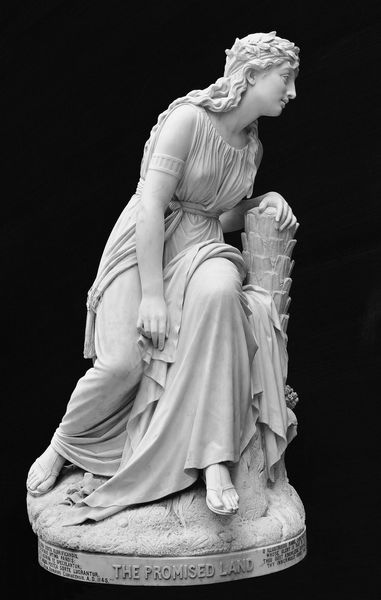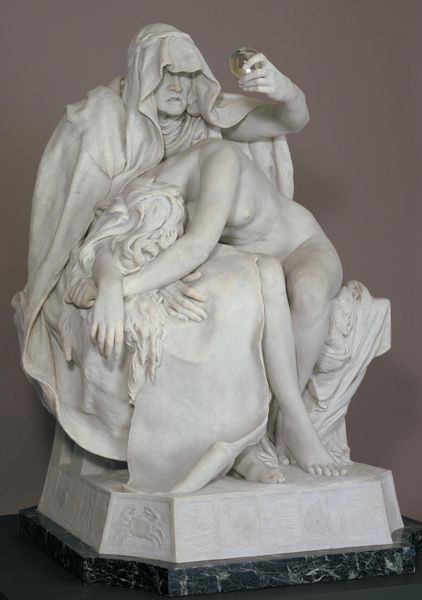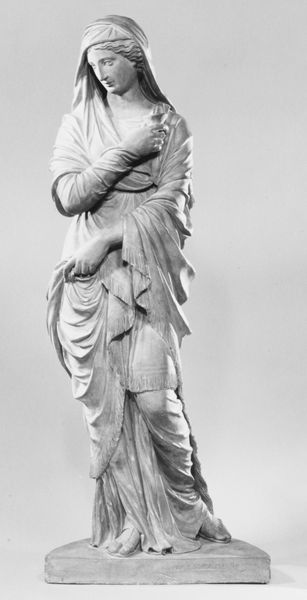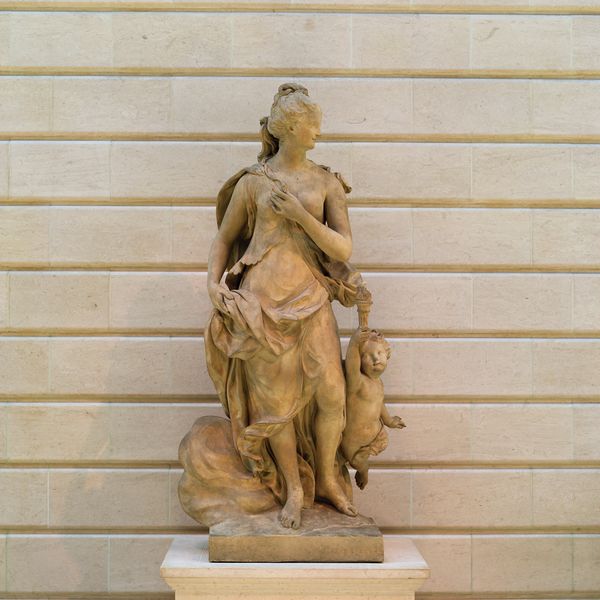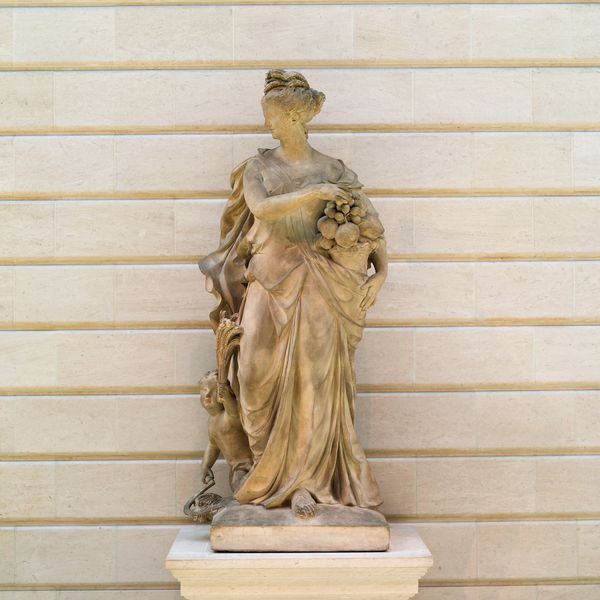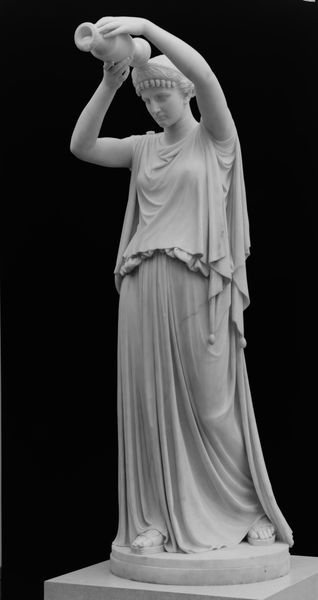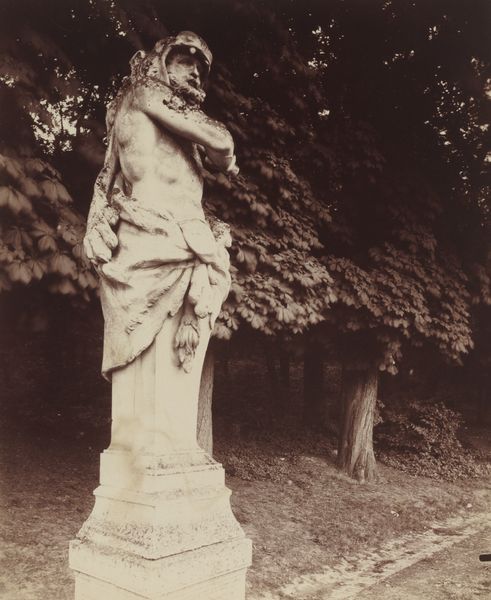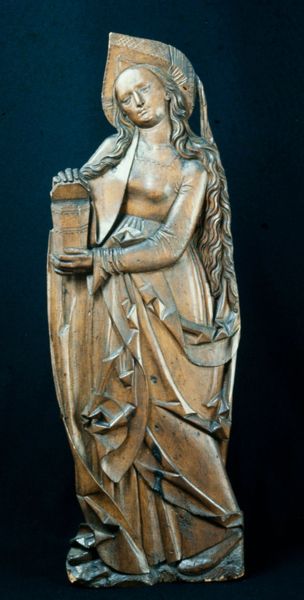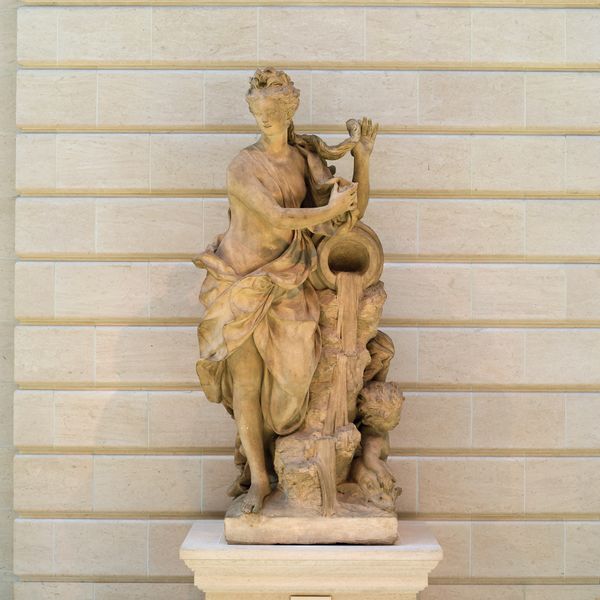
public-art, sculpture, marble
#
public art
#
baroque
#
sculpture
#
landscape
#
public-art
#
figuration
#
sculpture
#
marble
#
statue
Dimensions: weight 335 kg, height 164 cm, width 51.5 cm, depth 39.5 cm, height 104 cm
Copyright: Rijks Museum: Open Domain
Ignatius van Logteren sculpted this stone figure of Summer sometime between 1685 and 1732. Logteren was one of the most important sculptors in Amsterdam in the early 18th century, where classicism was very fashionable. The Dutch Golden Age was coming to an end and the Netherlands was losing its place as a dominant power in Europe. This sculpture of Summer is representative of the conservative Baroque classicism that dominated Dutch art at the time. The sculpture references classical Greek and Roman sculpture. In doing so, it presents an idealised image of beauty. The fact that this sculpture was commissioned at all speaks to the importance of art as a status symbol. Whether it was commissioned by a public institution or a private individual, it reflects the patron’s own taste and social position. Archival research might reveal the patron's personal motivations in commissioning this artwork. What did they want to communicate about themselves?
Comments
rijksmuseum about 2 years ago
⋮
Originally, this figure probably carried a sheaf of corn in her left arm, which is the attribute of Ceres, the goddess of agriculture. So the statue represents summer, the harvest season.
Join the conversation
Join millions of artists and users on Artera today and experience the ultimate creative platform.
